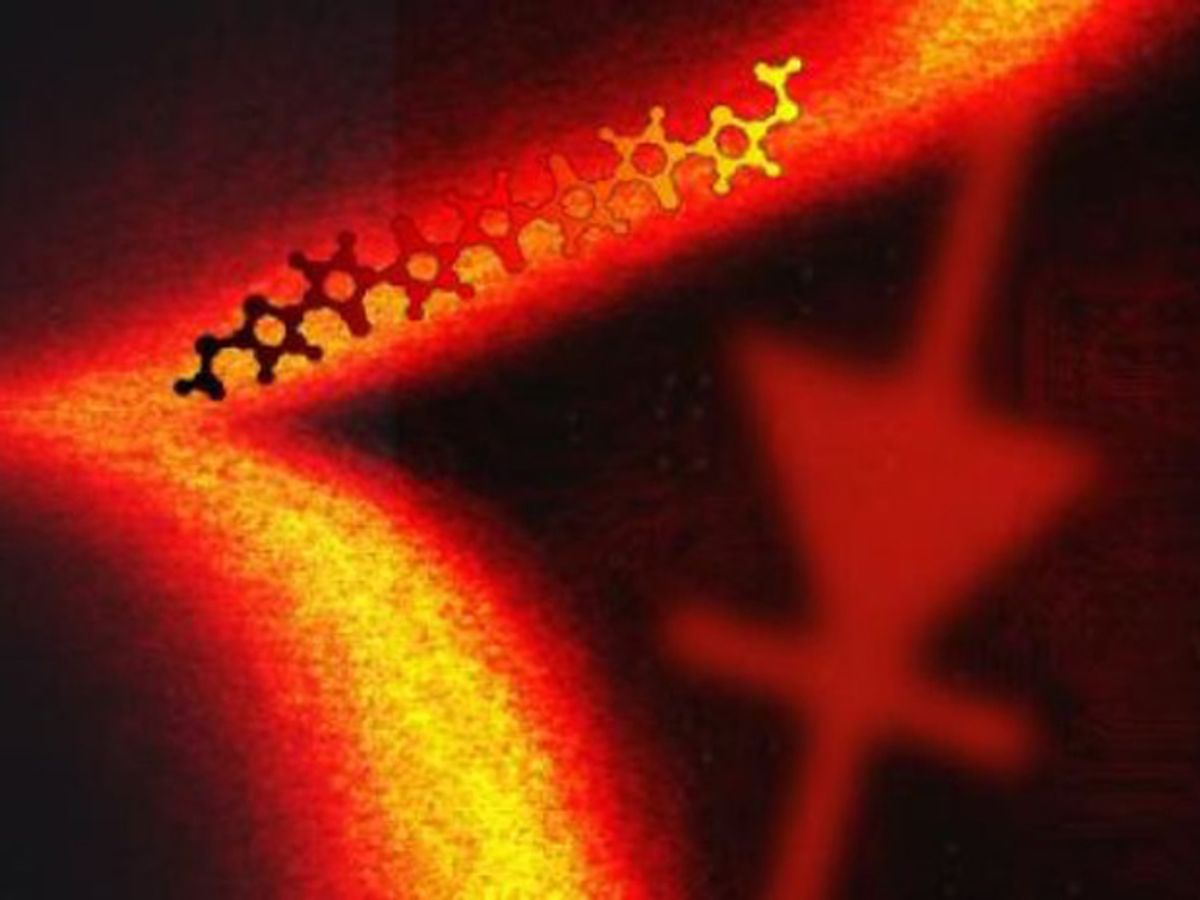Molecular electronics has long promised a day when individual molecules would serve as the basic building blocks for electronics.
That day has moved a bit closer thanks to research out of the Columbia University School of Engineering and Applied Science. Researchers there have developed a new technique that makes it possible to produce a diode from a single molecule.
In research published in the journal Nature Nanotechnology, the researchers claim that they have not only produced a single-molecule diode, but that it greatly outperforms all previous designs.
“Our new approach created a single-molecule diode that has a high rectification and a high ‘on’ current,” said Latha Venkataraman, a professor of applied physics at Columbia, in a press release. “Constructing a device where the active elements are only a single molecule has long been a tantalizing dream in nanoscience. This goal, which has been the 'holy grail' of molecular electronics ever since its inception with Aviram and Ratner's 1974 seminal paper, represents the ultimate in functional miniaturization that can be achieved for an electronic device."
Diodes are key elements in integrated circuits. They are two-terminal components with asymmetric conductance, which means that they keep current passing in only one direction. When negative voltage is applied to them, they shut the current off completely. In doing so, they act as a kind of on-off valve.
Molecule-scale diodes—fabricated by attaching molecules to metal electrodes to form single-molecule junctions that serve as a host of different circuit elements—have been tried before. But previous attempts, in which researchers looked to achieve asymmetric conductance by making the diodes asymmetric in design, have been less than satisfactory.
“While such asymmetric molecules do indeed display some diode-like properties, they are not effective,” explained Brian Capozzi in the press release. Capozzi, who was the lead author of the paper, is a doctoral candidate in Venkataraman’s lab. According to Capozzi:
A well-designed diode should only allow current to flow in one direction—the ‘on’ direction—and it should allow a lot of current to flow in that direction. Asymmetric molecular designs have typically suffered from very low current flow in both ‘on’ and ‘off’ directions, and the ratio of current flow in the two has typically been low. Ideally, the ratio of ‘on’ current to ‘off’ current, the rectification ratio, should be very high.
To overcome this poor current flow in single-molecule diodes, the Columbia researchers, in cooperation with colleagues at the University of California Berkeley, looked at putting the asymmetry in the area around the molecular junction—where the molecule meets the metal electrode. To do this, they simply covered the molecules with an ionic solution and then attached them to gold metal electrodes of differing sizes.
The results were impressive. As Venkataraman pointed out in the press release, the rectification ratios resulting from the new design are as high as 250, which is 50 times as high as was achieved with previous designs.
Further, the “on” current can be more than 0.1 microamps, which is notably high for a single-molecule diode, according to Venkataraman.
“It’s amazing to be able to design a molecular circuit, using concepts from chemistry and physics, and have it do something functional,” says Venkataraman, who added that, “The length scale is so small that quantum mechanical effects are absolutely a crucial aspect of the device. So it is truly a triumph to be able to create something that you will never be able to physically see and that behaves as intended.”
Dexter Johnson is a contributing editor at IEEE Spectrum, with a focus on nanotechnology.



